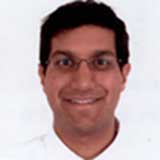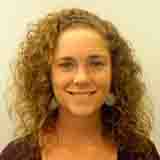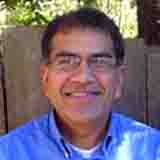 US hospitals annually discard millions of dollars of clean, unused medical equipment due to procedural excess or federal regulations. [1,2] Many health professional students do not recognise the magnitude of this waste or the extent of worldwide inequities in access to such supplies. In an era of value driven care, it is critical to engage students in cost conscious care and waste reduction efforts.
US hospitals annually discard millions of dollars of clean, unused medical equipment due to procedural excess or federal regulations. [1,2] Many health professional students do not recognise the magnitude of this waste or the extent of worldwide inequities in access to such supplies. In an era of value driven care, it is critical to engage students in cost conscious care and waste reduction efforts.
Remedy at University of California San Francisco (R@UCSF) is a student implemented, service learning initiative for the responsible redistribution of medical supplies to underserved communities. [3] Through an experiential curriculum, the program objectives are a) to reduce disparities in access to healthcare supplies by providing clean and needed equipment to under resourced communities and b) to expose students to the magnitude of medical waste in US hospitals.
 Students work with hospital staff to place unused medical supplies in clearly labeled R@UCSF bins identifying supplies that are and are not accepted. Currently, 17 collection bins are strategically located throughout one tertiary care academic hospital on medical/surgical units, outside operating rooms, and in the emergency department. All materials are clean, have not come in direct contact with patients, and would otherwise be discarded. Importantly, the program does not accept expired supplies, liquids, or medications.
Students work with hospital staff to place unused medical supplies in clearly labeled R@UCSF bins identifying supplies that are and are not accepted. Currently, 17 collection bins are strategically located throughout one tertiary care academic hospital on medical/surgical units, outside operating rooms, and in the emergency department. All materials are clean, have not come in direct contact with patients, and would otherwise be discarded. Importantly, the program does not accept expired supplies, liquids, or medications.
R@UCSF student volunteers transport the collected supplies to an on-campus storage site where they are sorted to reflect items commonly requested by recipient clinics. UCSF students and staff traveling to in need clinics submit lists of requested supplies from those clinics. R@UCSF students then identify whether such items are available for distribution to match supply and demand. Collaborators in the collection and distribution efforts include a diverse group of healthcare personnel—including midwives, nurses, medical assistants, operating room technicians, and physicians. Supplies often reach communities with limited, if any, access to such materials, and are used in both international primary care settings and emergency relief efforts. Materials from open packages are donated with the understanding that they are clean, but no longer sterile.
 Given the sheer volume of supplies collected, R@UCSF also partners with third party organizations that specialize in international large scale distribution of unused medical supplies. Through this approach, R@UCSF has donated over 26 000 pounds of supplies to under resourced communities in the past four years and directly supplied health projects in over 20 countries.
Given the sheer volume of supplies collected, R@UCSF also partners with third party organizations that specialize in international large scale distribution of unused medical supplies. Through this approach, R@UCSF has donated over 26 000 pounds of supplies to under resourced communities in the past four years and directly supplied health projects in over 20 countries.
R@UCSF surveyed recent student volunteers for program improvement and impact assessment. Sixty four of 77 students completed the survey. Responders believed R@UCSF taught them about the extent of waste in the US healthcare system and of disparities in access to healthcare supplies. They felt R@UCSF connected them with healthcare providers with similar interests, and showed them that students can make a real world difference. The majority of respondents agreed that the program supported and strengthened their pursuit of careers devoted to global health. Students reported that their donations matched the needs of the clinic, and that bringing requested supplies helped them develop rapport with the site providers and facilitated a perception that they had contributed more to the care provided.
When done in an ethically and socially responsible manner, the benefits of a program like R@UCSF can be significant. Prior documented benefits include retrieval of usable medical supplies, reduction in disposal costs and procedural excess, increased staff awareness of waste, and improved efficiency of operating room supplies. [1,2,4,5] Despite the limitations of observational survey research, we believe such a program may also positively impact student education and self-efficacy.
Although the value of community based education and community service is well recognized, most medical schools have not formally incorporated service learning into their curriculum. [6] Our experience complements prior studies of service-learning initiatives, which have shown benefits to also include strengthened capacity of personal development, improved ability to work with diverse communities, increased volunteerism and civic engagement, as well as gains for the partnering communities. [7,8]
Some may question whether it is ethical to use such supplies in vulnerable communities when they are not allowed in a US hospital. While we give serious credence to this concern, we believe the program meets ethical requirements, given that the supplies we send are clean and functional, and that the need for such supplies worldwide is overwhelming. At the same time, we stress that there must be simultaneous efforts aimed at reducing inefficiencies in US hospitals that have resulted in such an unconscionable degree of waste.
Expansion of programs like R@UCSF to other sites would increase the overall positive impact substantially. Resources to do so are available, [9] and in fact alumni from R@UCSF have successfully integrated this model at two other local hospitals. R@UCSF has also been working actively to scale this model more widely through use of social media, invited presentations, and reports. If implemented in a socially and ethically responsibly manner, this could produce not only important societal benefit, but substantial educational value as well.
Acknowledgements: We thank the many student volunteers and hospital staff at UCSF for their amazing dedication both to R@UCSF and the communities the program serves. We are especially grateful to Chris Cosden, Stacey Frumm, Jessica Gould, Jacob Mirsky, and Meggie Woods for their continued leadership and vision. We also thank Robert Brook, Jerome R. Hoffman, and Alissa Detz for their careful review of early drafts of this manuscript.
Funding/Support: Hemal Kanzaria is supported by the Robert Wood Johnson Foundation Clinical Scholars Program. R@UCSF has received support from the Arnold P Gold Foundation Humanism in Medicine Award through the Association of American Medical Colleges (via Dr Jain), the American Medical Student Association, and the UCSF Associated Students of the School of Medicine.
Role of the Sponsors: The funding agencies had no role in the preparation, review, or approval of the manuscript.
Conflict of Interest: All authors have completed the ICMJE uniform disclosure form at www.icmje.org/coi_disclosure.pdf and declare: the authors had financial support for R@UCSF from the above listed organisations; no financial relationships with any organisations that might have an interest in the submitted work in the previous three years; no other relationships or activities that could appear to have influenced the submitted work.
Hemal K Kanzaria, Robert Wood Johnson Foundation Clinical Scholars Program, Department of Emergency Medicine, University of California Los Angeles.
Lily B Muldoon, University of California San Francisco, School of Medicine, and Harvard School of Public Health.
Sharad Jain, Department of Medicine, University of California San Francisco, and San Francisco General Hospital.
References:
1. Rosenblatt WH, Silverman DG. Cost-effective use of operating room supplies based on the REMEDY database of recovered unused materials. J Clin Anesth 1994;6(5):400-4.
2. Goldberg ME, Vekeman D, Torjman MC, Seltzer JL, Kynes T. Medical waste in the environment: do anesthesia personnel have a role to play? J Clin Anesth 1996;8(6):475-9.
3. Kanzaria HK, Fischette S, Jain S. Remedy at UCSF: a sustainable student-run initiative. Lancet 2009;374(9688):438-40.
4. Rosenblatt WH, Chavez A, Tenney D, Silverman DG. Assessment of the economic impact of an overage reduction program in the operating room. J Clin Anesth 1997;9(6):478-81.
5. Crone RK. Global health interdependence. A grass-roots approach. Jama 1992;268(11):1462-3.
6. Seifer SD. Service-learning: community-campus partnerships for health professions education. Acad Med 1998;73(3):273-7.
7. McMenamin R, McGrath M, D’Eath M. Impacts of service learning on Irish healthcare students, educators, and communities. Nurs Health Sci 2010;12(4):499-506.
8. Borges NJ, Hartung PJ. Service Learning in Medical Education: Project Description and Evaluation. International Journal of Teaching and Learning in Higher Education 2007;19(1):1-7.
9. Remedy Teaching Manual Resources available at http://www.remedyinc.org/ContactForm/default.asp and
http://www.amsa.org/AMSA/Homepage/About/Committees/CEH/EQUIP.aspx Accessed August 27, 2013.
